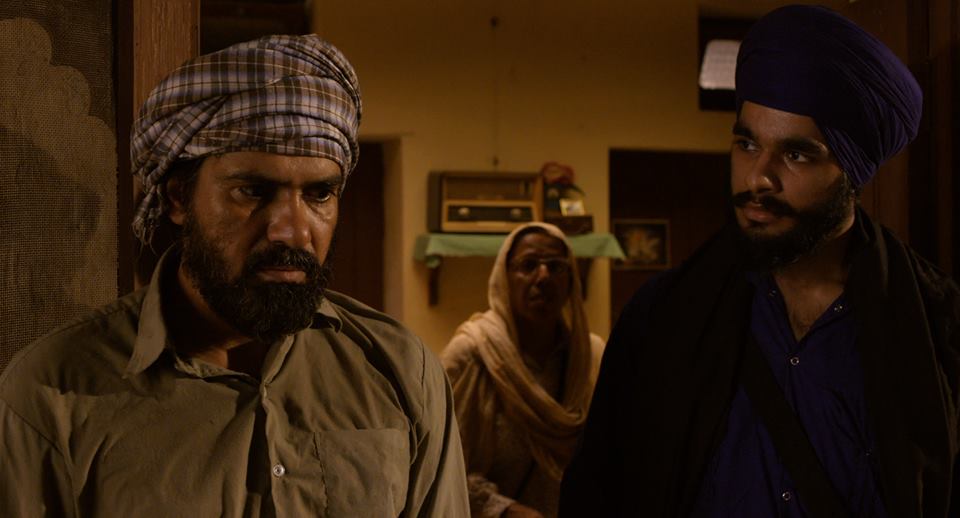Today, one of the two Indian films in the ‘Un Certain Regard’ section of the 68th Cannes Film Festival has its world premier, the Punjabi film, Chauthi Koot (The Fourth Direction). Chauthi Koot is filmmaker Gurvinder Singh’s second film after Anhe Ghore Da Daan (Alms For A Blind Horse, 2011), also in Punjabi.
Born and raised in Delhi, Gurvinder’s only connection with his Punjabi roots has been the language spoken in his house and and in his neighborhood. Turning to Punjabi music and literature to stay connected to his heritage, and to understand the socio-political undercurrents and the interpersonal bonds and schisms of a majorly agrarian society, he found the inspiration he needed to make his films. Anhe Ghore Da Daan was based on Gurdial Singh’s novel of the same name, while Chauthi Koot combines two stories of famous Punjabi writer Waryam Singh Sindhu set in the 1980s, a very turbulent period for Punjab, as it was grappling with the military at one end and a militant movement demanding a separate Sikh state on the other.
The film looks at two incidents, loosely connected – two Hindu friends trying to get to Amritsar and some months earlier, a farmer being told that he has to put the family dog to sleep. According to Gurvinder, an alumnus of the Film and Television Institute of India (FTII), Pune, “one story flows into the other and back – like a relay race with one character passing on the baton to the other.” While based around the events of 1984 (Operation Blue Star and subsequently Indian Prime Minister Indira Gandhi’s assassination and the anti-Sikh riots in Delhi), the film is not directly connected to them. “It explores how social and political turmoil robs the ordinary person of the basic right to live their lives in peace.”, Gurvinder adds.
Gurvinder admits that raising funds for the film was a huge challenge, in spite of all the accolades Anhey Ghore Da Daan got the world over, as he doesn’t really believe in the traditional format of a screenplay. “My scripts are never more than forty pages. Funding agencies find that too short. They want to read a script like a literary work. For me, the script is just a blue print that can give rise to cinematic liberties.”, he says. Thankfully, he found people willing to come on board who were open to the idea of elaboration and improvisation while shooting. The film is produced by Kartikeya Singh of the Film Cafe, India along with Catherine Dussart of Catherine Dussart Productions, France, NFDC, India and Sunil Doshi’s Handmade Films, India.
The film has been shot at actual locations in Punjab, that were caught under heavy militancy fire in the 1980s – Amritsar, Tarn Taran and Ferozepur districts of Punjab. Incidentally, Waryam Singh Sandhu’s stories are also set in these very places. Gurvinder also considers seasons to be as important as the locations, a thought echoed by his cinematographer, Satya Rai Nagpaul who adds. “The look came from the choice of location, the art direction and the costumes. In addition, the other key decision was the seasons of the shoot, which were the monsoons for the main body of the film and winters for the other thread. A very important element was the height of the paddy fields during the monsoon months. My process was to find the lighting and the lensing that would deliver the idea of that time through all these elements.
For casting his actors, Gurvinder believes that if the face of the person communicates the feeling he is looking for, then he feels the person is the one he is looking for. Whether that person can act or not, or has acted before or not, is secondary to him. But it is not just the face, it is also the voice. “The voice should resonate with the emotion a character has to project onto a shot or scene. It’s a very abstract and intuitive thing. Sometimes the voice is totally wrong even if the face is right. They both have to come together somehow.”, he adds. Gurvinder did away with rehearsals and just directed the actor by explaining his action, the mood and his relationship to the camera in a bid to capture the rawness and energy of a spontaneous take, even if the actor was conscious of the presence of the camera, lights and other shooting equipment.
A New Yorker living in Paris for forty years, Marc Marder, has composed the film’s musical score. Gurvinder says he wanted to work with Marder, ever since he heard his music in Rithy Panh’s The Missing Picture, which touched a chord within him. “I prefer the kind of music the does not come with a pre-configured emotion attached to it. The tonality the music takes is in response to the image and sound. Modern experimental music is more malleable to blend in with other sounds and interact with the image.”, Gurvinder explains.
Following Cannes and the festival circuit, the film is to release around September in India.
https://vimeo.com/127110625


